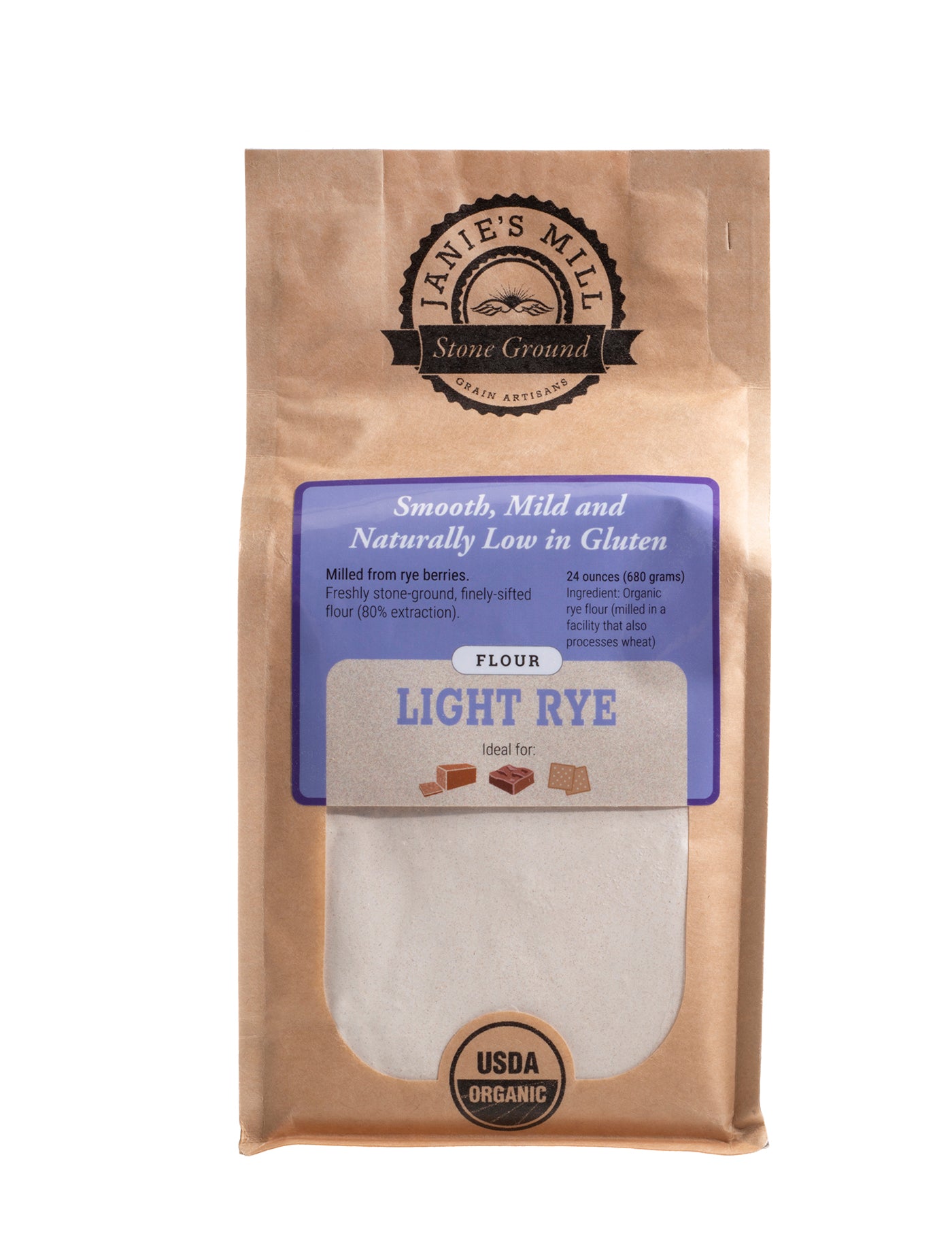Rye flour in bread making

Rye flour behaves quite differently from wheat flour in bread making due to its unique protein structure and high pentosan content (a type of fiber that absorbs lots of water).
Liquid Requirements:Rye flour needs significantly more liquid than wheat flour - typically 15-25% more. This is because rye's pentosans can absorb up to 8-10 times their weight in water, compared to wheat gluten which absorbs about 2-3 times its weight. So if a wheat bread recipe calls for 65% hydration, a similar rye bread might need 80-85%.
Gluten and Structure:Rye contains very little gluten-forming proteins. Instead, it relies on pentosans for structure, which create a much denser, closer crumb. This is why the GBBO transcript noted that "rye flour often gives a very close texture" - it's not a flaw, it's the nature of rye.
Mixing with Other Flours:Rye blends well with wheat flours, but ratios matter significantly:
Light rye blends (10-30% rye): Mix easily with bread flour, create subtle flavor with maintained structure
Medium blends (30-50% rye): Need careful hydration adjustment, produce denser but still manageable breads
Heavy rye blends (50%+ rye): Require significant technique changes, much more liquid, longer fermentation
Best Flour Partners:
Bread flour: High gluten content compensates for rye's lack of structure
Whole wheat: Complementary flavors, similar density expectations
Spelt: Traditional European combination, both ancient grains
White flour: Most common blend for accessibility
Practical Ratios:For beginners, start with 20% rye to 80% bread flour. This gives rye flavor without major technique changes. Flora's approach in the transcript - using "a blend of plain wholemeal and rye flours" - is sensible for quick breads where gluten development isn't crucial anyway.
The key is understanding that rye behaves more like a flavoring agent and texture modifier than a structural flour.



